Steel and metal plants operate complex and energy-intensive processes that involve high-temperature operations, fuel combustion, and chemical treatments. These activities generate and handle a variety of hazardous gases, including flammable, toxic, and oxygen-displacing gases, posing significant safety risks to personnel and equipment. Reliable gas leak detection is critical to prevent accidents, ensure regulatory compliance, and maintain uninterrupted operations.
Our fixed and portable gas detectors provide comprehensive safety solutions tailored to the unique challenges of steel and metal manufacturing environments, helping you safeguard your workforce and assets effectively.
Here are some of the key processes in the Steel & Metal Plant
- Raw Material Handling & Preparation
- Ironmaking (Blast Furnace or Direct Reduced Iron)
- Steelmaking (Basic Oxygen Furnace or Electric Arc Furnace)
- Steel Refining & Continuous Casting
- Rolling, Heat Treatment & Surface Finishing
- Fuel Systems, Gas Distribution & Emission Control
- Maintenance, Inspection & Confined Space Safety
Raw Material Handling & Preparation
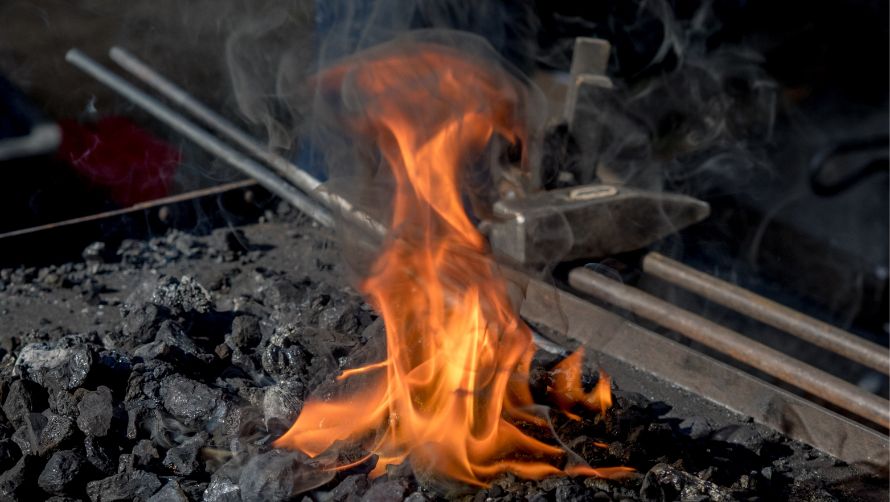
This process includes the receipt, storage, and preparation of essential raw materials such as iron ore, coal, coke, limestone, and fluxes used in iron and steel production. Activities involve screening, crushing, blending, stockpiling, and sintering of ore fines. Coal is prepared for coke making, and fluxes are readied to facilitate metallurgical reactions. This phase involves handling combustible dust and gases generated during sintering and drying, making it critical for gas leak detection and safety.
Types of Gases Present
Carbon Monoxide (CO) – Emitted during sintering and incomplete combustion of coke fines; toxic and flammable.
Methane (CH4) – Released from coal stockpiles and enclosed storage areas; highly flammable.
Carbon Dioxide (CO2) – Emitted from combustion during drying and sintering.
Combustible Dust – Fine particulate matter from ore and coal handling posing explosion hazards
Sintering Machine Area
High-temperature process where fine iron ore particles are fused together with coke breeze and fluxes using combustion gases. CO and CO₂ are commonly emitted here.
Fixed Point Detectors: CO and CO₂ detectors should be installed near sinter bed discharge points, exhaust hoods, and gas ducts.
Portable Detectors: Workers performing maintenance or inspection in sintering chambers or ducts should carry portable multi-gas detectors measuring CO, O₂, and CH₄.
Coal & Coke Storage Yards
Stockpiles of coal and coke, especially in enclosed or poorly ventilated areas, can release methane due to spontaneous heating..
Fixed Point Detectors: Methane (CH₄) and carbon monoxide (CO) detectors should be installed in covered storage areas and tunnels with limited airflow.
Portable Detectors: Portable gas detectors should be used when entering coal bins, tunnels, or confined spaces prone to gas accumulation or oxygen deficiency.
Pelletizing & Drying Sections
Iron ore fines are processed into pellets and dried using heat; combustion byproducts like CO are present.
Fixed Point Detectors: CO detectors should be installed near pellet dryers and kilns.
Portable Detectors: Maintenance personnel should carry portable detectors when entering confined drying or kiln areas.
Material Conveying Systems (Conveyors, Silos, Hoppers)
Transfer of raw materials through conveyors and storage in silos/hoppers can create confined zones where gases accumulate.
Fixed Point Detectors: CO and CH₄ detectors should be placed at conveyor transfer points and atop silos.
Portable Detectors: Portable detectors are essential during cleaning or confined space entry to ensure safe oxygen and gas levels.
Ironmaking (Blast Furnace or Direct Reduced Iron)
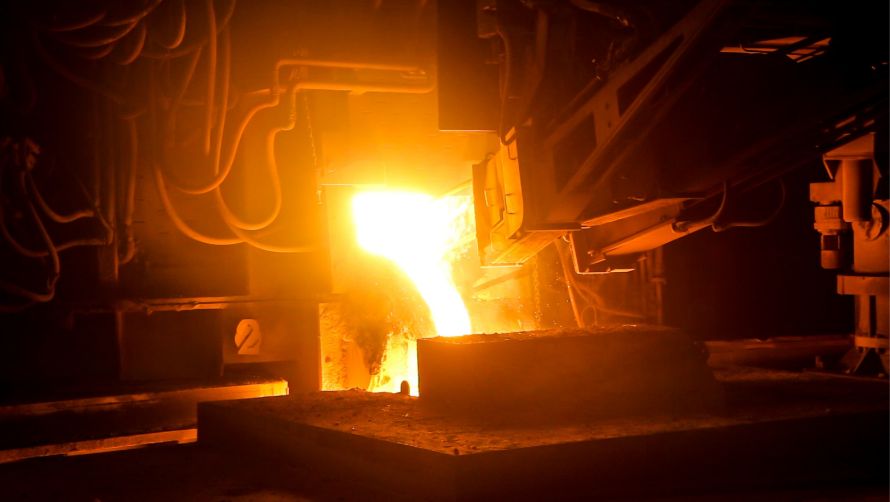
Ironmaking is the core process in a steel or iron plant where iron ore is chemically reduced to produce molten pig iron (via Blast Furnace) or solid sponge iron (via Direct Reduced Iron process). The Blast Furnace process uses coke and fluxes to reduce sintered ore at high temperatures with hot air injection, producing pig iron and blast furnace gas rich in carbon monoxide. The DRI process reduces iron ore using reducing gases (mainly CO and H₂) derived from natural gas or coal gasification, resulting in sponge iron. Both methods involve handling flammable, toxic gases and require careful monitoring for gas leaks and oxygen deficiency.
Types of Gases Present
Carbon Monoxide (CO) – Highly toxic and flammable; major component of blast furnace gas and DRI reducing gas.
Methane (CH4) – Present especially in DRI processes using natural gas; flammable.
Carbon Dioxide (CO2) – Non-toxic but can displace oxygen causing asphyxiation risks.
Hydrogen (H2)– Flammable gas present in DRI reducing gas and other gas systems.
Blast Furnace Gas (BFG) – A mixture primarily of CO, CO₂, and N₂; low calorific but toxic.
Blast Furnace Top & Charging System
Area where raw materials (ore, coke, flux) are fed into the furnace; gas leaks of CO are common due to high-pressure charging systems and gas release.
Fixed Point Detectors: CO detectors should be installed near furnace top, charging bells, and exhaust gas ducts.
Portable Detectors: Workers entering this zone during maintenance should carry multi-gas detectors measuring CO, O₂, and H₂.
Blast Furnace Tuyere & Hot Blast Area
Hot air is blown into the furnace through tuyeres at the bottom; potential gas leaks of CO and H₂ due to high temperatures and pressures.
Fixed Point Detectors: CO and H₂ detectors should be placed near tuyeres and hot blast piping zones.
Portable Detectors: Portable gas detectors must be used during shutdowns or maintenance in these hazardous areas.
DRI Kiln or Shaft Furnace
In DRI processes, iron ore is reduced in a kiln or shaft furnace by reducing gases; leaks of CO, H₂, and CH₄ may occur.
Fixed Point Detectors: CO, H₂, and CH₄ detectors should be installed at kiln outlets, gas piping, and enclosure areas.
Portable Detectors: Workers should use portable multi-gas detectors when inspecting or servicing the kiln or gas supply lines.
Gas Handling & Gas Cleaning Systems
Includes gas compressors, scrubbers, and pipelines handling blast furnace gas or reducing gases; potential leaks of CO, H₂, and CH₄.
Fixed Point Detectors: Install CO, H₂, and CH₄ detectors near compressors, scrubbers, valves, and pipeline joints.
Portable Detectors: Portable detectors should be used by maintenance personnel working on or near gas equipment.
Steelmaking (Basic Oxygen Furnace or Electric Arc Furnace)

Steelmaking is the process of converting molten iron, scrap steel, and alloys into steel with desired chemical composition and properties. The two primary methods are:
- Basic Oxygen Furnace (BOF): Molten pig iron from the blast furnace is refined by blowing high-purity oxygen to reduce carbon and impurities, producing molten steel.
- Electric Arc Furnace (EAF): Scrap steel and sometimes direct reduced iron (DRI) are melted using electric arcs. This method allows for flexible steel production and uses less raw iron.
Both processes involve handling flammable and toxic gases such as carbon monoxide and oxygen-enriched atmospheres, with significant heat and dust generation, requiring robust gas leak detection and safety systems.
Types of Gases Present
Carbon Monoxide (CO) – Produced during decarburization in BOF and from combustion reactions; toxic and flammable.
Carbon Dioxide (CO2) – Emitted from combustion and oxidation reactions; can displace oxygen.
Hydrogen (H2)– May be present due to reactions or as residual from DRI feedstock in EAF.
Oxygen (O2): Used in high concentrations; leaks can increase fire risks.
Dust and Fume Particles: Steelmaking produces dust containing metals and other harmful particulates.
Oxygen Lance & Blowpipes (BOF)
High-pressure oxygen is blown through the lance to refine molten iron; leaks of oxygen and CO can occur.
Fixed Point Detectors: Install O₂ and CO detectors near oxygen lance areas and around the BOF vessel.
Portable Detectors: Operators and maintenance crews should carry portable gas detectors when working near oxygen piping or the furnace mouth.
Electric Arc Furnace Shell & Transformer Area (EAF)
Electric arcs melt scrap and DRI; potential leaks of CO and dust emissions occur from the furnace shell and off-gas ducts.
Fixed Point Detectors: CO detectors and particulate monitors should be installed near the furnace shell, roof, and off-gas extraction ducts.
Portable Detectors: Portable multi-gas detectors should be used during maintenance or inspection within the furnace enclosure.
Off-gas Ducts & Gas Handling Systems
Gases generated during steelmaking are collected and treated; potential leaks of CO and dust emissions can occur.
Fixed Point Detectors: CO and dust detectors should be placed along gas ducts, scrubbers, and filters.
Portable Detectors: Maintenance personnel should use portable detectors during cleaning or repairs.
Oxygen Storage & Supply Systems
Storage tanks and piping for high-purity oxygen pose risks of leaks increasing fire hazards.
Fixed Point Detectors: O₂ detectors must be installed in oxygen storage areas, supply lines, and compressor rooms.
Portable Detectors: Portable detectors are essential when servicing oxygen storage or supply equipment.
Steel Refining & Continuous Casting
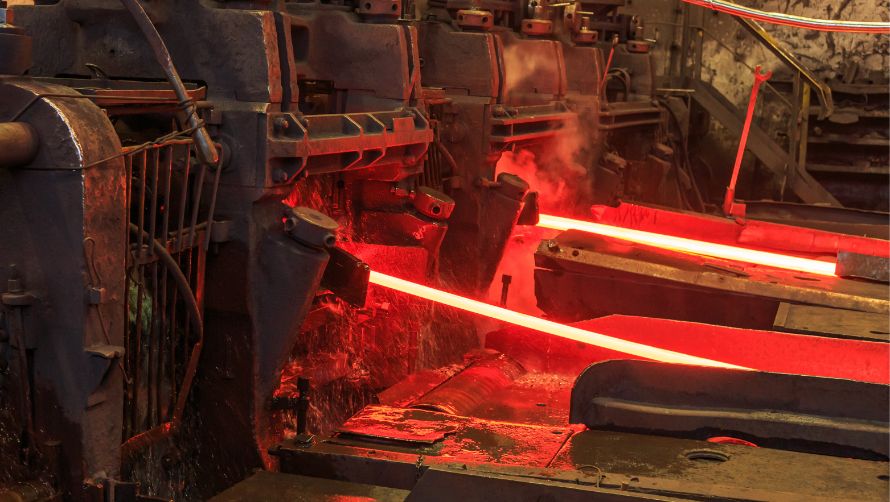
Steel refining involves further adjustment of the chemical composition and temperature of molten steel after the primary steelmaking stage. This includes processes like ladle refining, vacuum degassing, and alloying to improve steel quality. The molten steel is then cast continuously into semi-finished shapes such as billets, slabs, or blooms using continuous casting machines. This process handles high-temperature molten metal and associated gases, requiring precise gas monitoring to ensure safety and quality.
Types of Gases Present
Carbon Monoxide (CO) – Released from reactions and decarburization during refining.
Carbon Dioxide (CO2) – Emitted during oxidation reactions.
Hydrogen Sulfide (H2S)– Possible from sulfur-containing impurities; toxic and flammable.
Argon (Ar) – Used as a purging gas; inert but can displace oxygen in confined areas.
Nitrogen (N2) – Sometimes used as a shielding or purging gas; can cause oxygen displacement.
Ladle Refining Station
Molten steel is treated with gases like argon or nitrogen for stirring and purging; potential leaks of these gases and CO occur.
Fixed Point Detectors: CO, Ar, and N₂ detectors should be installed near ladle refining vessels and gas injection points.
Portable Detectors: Operators and maintenance staff should use portable multi-gas detectors when working near ladle refining equipment.
Vacuum Degassing Units
Vacuum systems remove dissolved gases and impurities; leaks of process gases and oxygen-deficient atmospheres are possible
Fixed Point Detectors: Install detectors for CO, Ar, and oxygen levels near vacuum chambers and exhaust systems.
Portable Detectors: Portable detectors are critical for confined space entry during maintenance.
Continuous Casting Machines
Molten steel is solidified into billets or slabs; gases like CO and argon are present in the casting environment.
Fixed Point Detectors: CO and Ar detectors should be installed around caster areas and off-gas collection points.
Portable Detectors: Portable detectors must be used during equipment servicing or inspection.
Alloying & Additive Storage
Storage and handling of alloying elements and additives can release dust and gases; some may emit toxic vapors.
Fixed Point Detectors: Gas detectors should be placed near storage silos and additive handling stations.
Portable Detectors: Portable detectors should be used when handling or servicing additive equipment.
Rolling, Heat Treatment & Surface Finishing

This stage involves shaping and enhancing steel products through hot rolling, cold rolling, annealing, galvanizing, pickling, and other surface treatments. Rolling reduces thickness and shapes steel into sheets, strips, bars, or coils. Heat treatment processes modify mechanical properties, while surface finishing protects steel against corrosion and improves appearance. Gas handling during annealing (using protective atmospheres) and furnace operations requires vigilant gas detection due to the use of combustible and potentially toxic gases.
Types of Gases Present
Carbon Monoxide (CO) – Byproduct of combustion in heating furnaces; toxic and flammable.
Combustion Gases (CO, CO₂, NOx) – From fuel-fired furnaces and boilers.
Nitrogen (N2) – Used as an inert atmosphere; can cause oxygen displacement hazards.
Hydrogen (H2) – Used in annealing atmospheres; highly flammable.
Ammonia (NH3) – Sometimes used in pickling or surface treatment; toxic and corrosive.
Annealing Furnaces & Atmosphere Control
Furnaces use hydrogen-nitrogen mixtures or other controlled atmospheres for heat treatment; leaks can cause fire or asphyxiation risks.
Fixed Point Detectors: Install H₂, CO, and O₂ detectors near furnace doors, exhaust stacks, and atmosphere supply systems.
Portable Detectors: Operators should carry portable detectors during furnace inspection and maintenance.
Pickling and Surface Treatment Areas
Chemical baths may release ammonia and other harmful vapors during steel cleaning and surface finishing.
Fixed Point Detectors: NH₃ detectors should be installed near pickling tanks and ventilation outlets.
Portable Detectors: Portable ammonia detectors are essential during chemical handling or maintenance.
Fuel Gas Supply & Combustion Systems
Fuel gases such as natural gas or LPG are used for heating furnaces; leaks of combustible gases can occur.
Fixed Point Detectors: Install combustible gas detectors near burners, fuel gas piping, and storage areas.
Portable Detectors: Portable combustible gas detectors should be used during fuel system inspections and repairs.
Rolling Mills & Cooling Zones
Cooling processes may involve water mist or inert gas; oxygen displacement hazards exist if inert gases leak.
Fixed Point Detectors: N₂ and O₂ detectors should be installed in enclosed cooling zones or inert gas environments.
Portable Detectors: Portable multi-gas detectors should be used in confined or enclosed cooling areas.
Fuel Systems, Gas Distribution & Emission Control
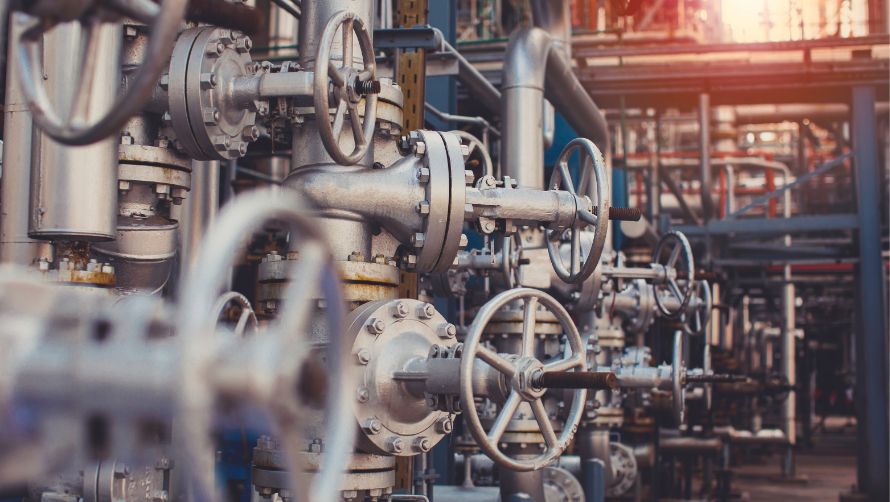
This process covers the storage, handling, and distribution of fuel gases such as natural gas, coke oven gas, or LPG used throughout the steel and metal plant for heating, power generation, and combustion processes. It also includes emission control systems like scrubbers, electrostatic precipitators, and bag filters to reduce air pollution from process gases and particulates. Due to the flammable and toxic nature of gases handled, robust leak detection and safety monitoring are critical.
Types of Gases Present
Carbon Monoxide (CO) – From incomplete combustion and process gases; toxic and flammable.
Hydrogen (H2) – Present in coke oven and other process gases; flammable
Methane (CH4)– Primary component of natural gas; highly flammable
Sulfur Dioxide (SO2) – Emitted during sulfur-containing fuel combustion; toxic and corrosive.
Volatile Organic Compounds (VOCs) – Emitted from various processes; flammable and harmful.
Fuel Gas Storage & Receiving
Storage tanks and receiving stations for natural gas, LPG, or coke oven gas; leaks can lead to fire/explosion hazards.
Fixed Point Detectors: Install combustible gas detectors around storage tanks, unloading areas, and receiving pipelines.
Portable Detectors: Portable combustible gas detectors should be used during tank filling and maintenance operations.
Gas Piping & Distribution Networks
Extensive piping network distributes fuel gas to furnaces, boilers, and other users; leaks may occur at valves, flanges, and joints.
Fixed Point Detectors: Install fixed combustible gas detectors along pipeline corridors, valve stations, and compressor areas.
Portable Detectors: Regular portable gas detection patrols should be conducted to detect leaks early.
Combustion & Emission Control Equipment
Includes burners, flares, scrubbers, and filters managing combustion emissions; leaks of CO, SO₂, and VOCs can occur.
Fixed Point Detectors: CO, SO₂, and VOC detectors should be installed near burners, flare headers, and emission treatment units.
Portable Detectors: Portable gas detectors should be used during inspection and maintenance of emission control systems.
Compressor & Gas Conditioning Units
Compressors and conditioning units handling fuel gas may develop leaks, especially at seals and joints.
Fixed Point Detectors: Combustible gas detectors should be installed near compressors, gas coolers, and conditioning equipment.
Portable Detectors: Portable detectors are necessary for routine maintenance and leak surveys.
Maintenance, Inspection & Confined Space Safety
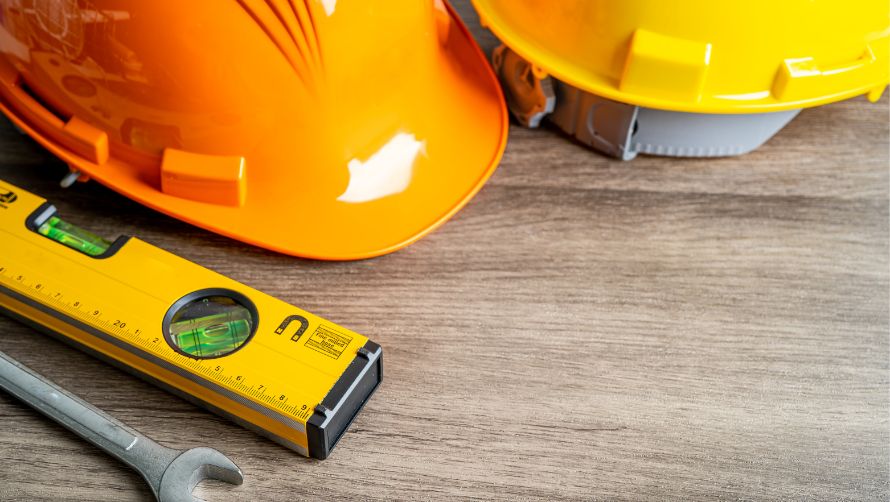
Maintenance and inspection activities are crucial for the safe and efficient operation of steel and metal plants. These activities often require entry into confined spaces such as tanks, ducts, vessels, and tunnels where hazardous gases may accumulate, creating risks of toxicity, flammability, or oxygen deficiency. Effective gas detection before and during entry ensures worker safety and compliance with safety regulations.
Types of Gases Present
Carbon Monoxide (CO) – Accumulates in confined spaces due to process residues or combustion
Hydrogen (H2) – From process leaks or residues.
Methane (CH4)– From process leaks or residues.
Volatile Organic Compounds (VOCs) – Present in certain confined spaces due to chemical residues.
Hydrogen Sulfide (H2S)– Possible from sulfur-containing impurities; toxic and flammable.
Oxygen (O2) Deficiency – Due to displacement by other gases or consumption by rust and other reactions.
Confined Space Entry Points (Tanks, Vessels, Ducts)
Confined spaces prone to hazardous atmospheres that require gas monitoring before and during entry.
Fixed Point Detectors: Not typical inside confined spaces; rely mainly on portable detectors.
Portable Detectors: Essential for continuous monitoring of gas levels for toxicity, combustibility, and oxygen during entry and work.
Maintenance Areas Around Furnaces & Boilers
Risk of leaks or residual gases during equipment maintenance or repairs.
Fixed Point Detectors: Install fixed gas detectors in maintenance workshops and areas adjacent to process equipment.
Portable Detectors: Portable multi-gas detectors are vital during maintenance work for early gas leak detection.
Inspection & Repair Zones
Areas where pipes, valves, and vessels are inspected or repaired; leaks may be present.
Fixed Point Detectors: Fixed detectors near high-risk valves, flanges, and joints.
Portable Detectors: Use portable detectors during inspection and leak surveys.
Storage & Handling Areas for Chemicals & Fuels
Areas where hazardous chemicals and fuels are stored or transferred, posing gas leak risks.
Fixed Point Detectors: Fixed gas detectors for combustible gases and toxic vapors in storage rooms.
Portable Detectors: Portable detectors should be used during chemical handling or transfer operations.
